
India, officially the Republic of India, is a country in South Asia. It is the seventh-largest country by area; the most populous country as of June 2023; and from the time of its independence in 1947, the world's most populous democracy. Bounded by the Indian Ocean on the south, the Arabian Sea on the southwest, and the Bay of Bengal on the southeast, it shares land borders with Pakistan to the west; China, Nepal, and Bhutan to the north; and Bangladesh and Myanmar to the east. In the Indian Ocean, India is in the vicinity of Sri Lanka and the Maldives; its Andaman and Nicobar Islands share a maritime border with Thailand, Myanmar, and Indonesia.

The Pterophoridae or plume moths are a family of Lepidoptera with unusually modified wings. Though they belong to the Apoditrysia like the larger moths and the butterflies, unlike these they are tiny and were formerly included among the assemblage called "microlepidoptera".

The long-trained nightjar is a species of nightjar in the family Caprimulgidae. It is found in Argentina and Brazil.

Amblyptilia acanthadactyla, also known as the beautiful plume, is a moth of the family Pterophoroidea found in across the Palearctic including Europe. The species was first described by the German entomologist, Jacob Hübner in 1813.

Amblyptilia punctidactyla, also known as the Brindled Plume, is a moth of the family Pterophoridae found across the Palearctic. The species was first described by the English entomologist, Adrian Hardy Haworth in 1811.
Amblyptilia scutellaris is a moth of the family Pterophoridae that is known from Colombia.
Amblyptilia landryi is a moth of the family Pterophoridae that is known from Honduras.
Amblyptilia kosteri is a moth of the family Pterophoridae that is known from Argentina and Brazil.
Amblyptilia punoica is a moth of the family Pterophoridae that is known from Peru.
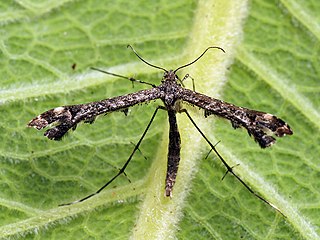
Amblyptilia is a genus of moths in the family Pterophoridae. The genus was raised by the German entomologist, Jacob Hübner in 1825.
Amblyptilia direptalis is a moth of the family Pterophoridae. It is known from Ethiopia, Kenya, South Africa, Tanzania, India and Sri Lanka.

Amblyptilia pica, the geranium plume moth, is a moth of the family Pterophoridae. The species was first described by Baron Walsingham in 1880. It is found in western North America from Alaska to California, inland to Alberta and Kansas. It is also found in the north-eastern United States and Ontario.
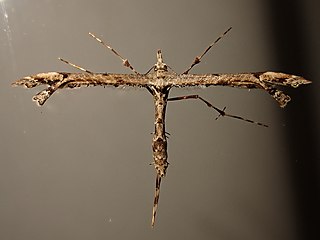
Amblyptilia repletalis is a moth of the family Pterophoridae. It is endemic to New Zealand and can be found throughout the country from North Cape to Bluff. The species inhabits a variety of habitats including native forest clearings, shrubland, coastal dunes and gardens. Larvae feed on the seed heads of Plantago plant species. Adults are on the wing all year round and are attracted to light.
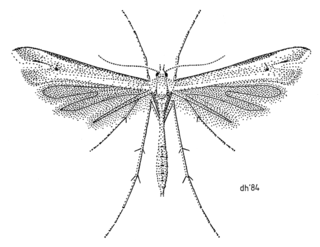
Amblyptilia lithoxesta is a moth of the family Pterophoridae. It is endemic to New Zealand. It was first described by Edward Meyrick in 1885. This species inhabits rough herbage on mountain sides. Larvae feed on Veronica buchananii. Adults are on the wing in January.
Amblyptilia hebeata is a moth of the family Pterophoridae. It is found in Tibet, China.
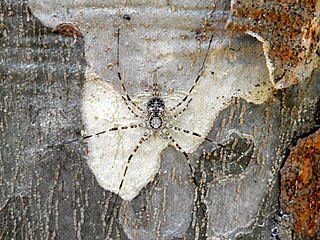
Neotama is a genus of tree trunk spiders that was first described by M. Baehr & B. Baehr in 1993.
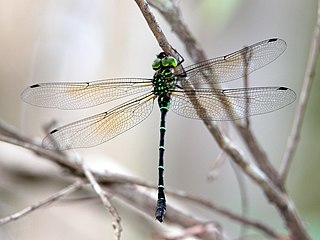
Dromaeschna forcipata is a species of dragonfly in the family Telephlebiidae, known commonly as the green-striped darner. It generally inhabits streams in coastal rainforests of north-eastern Queensland, Australia.

Forcipata loca is a species of leafhopper in the family Cicadellidae.

Forcipata is a genus of leafhoppers in the family Cicadellidae. There are at least 20 described species in Forcipata.











